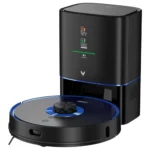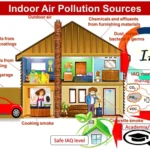Have you ever wondered how your smart vacuum cleaner is able to eliminate harmful pathogens and reduce allergens effectively? The answer lies in its use of UV light technology. But, with all the different types of UV light out there, you might be confused about which one is used in your smart vacuum cleaner. In this article, we’ll take a closer look at UV-C and UV-A light, and determine which type is used in smart vacuum cleaners. Additionally, we’ll explore the benefits of using UV light and the factors you should consider when choosing a smart vacuum cleaner with this technology. So, let’s dive in and unravel this mystery together!
UV Light Explained
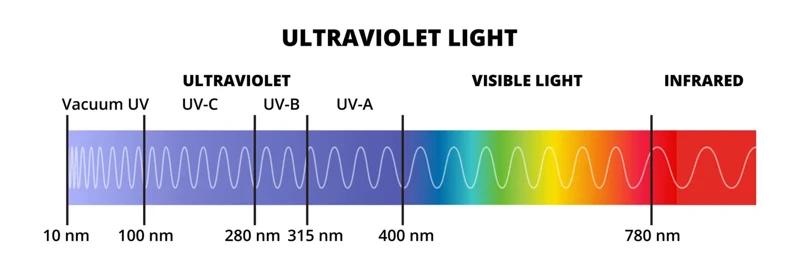
UV light is a highly effective technology used in smart vacuum cleaners to ensure efficient cleaning, and effectively eliminating contaminants. Having an understanding of how UV light works can help you make a better decision when it comes to choosing the right smart vacuum cleaner for your needs. Understanding the benefits of UV light technology in smart vacuums is also crucial in making the right choice. In this section of our article, we will delve into the intricacies of UV light in smart vacuum cleaners, its types, usage, and how it compares with traditional cleaning methods. For more useful information on UV sterilization in smart vacuum cleaners, be sure to check out our smart vacuum UV sterilization guide.
What is UV Light?
UV light is a type of electromagnetic radiation that is both invisible to the human eye and has a shorter wavelength than visible light. There are three types of UV light that are categorized according to their wavelength: UV-A, UV-B, and UV-C. UV-A light has the longest wavelength (320-400 nanometers) and is the least harmful, while UV-C has the shortest wavelength (100-280 nanometers) and is the most dangerous. UV-B, which falls in between UV-A and UV-C, is responsible for sunburn and skin damage.
One of the main characteristics of UV light is its ability to destroy microorganisms by altering their DNA structure. This makes UV light extremely effective in disinfecting and sterilizing surfaces and objects. As a result, many smart vacuum cleaners have begun incorporating UV-C technology into their designs to provide users with a more efficient and effective cleaning experience.
However, while UV-C light is highly effective in destroying microorganisms, it can also be harmful to humans if not used properly. That’s why it’s important to follow safety guidelines when using smart vacuum cleaners with UV-C technology. To minimize the risk of exposure to UV-C radiation, it’s recommended that users keep a safe distance from the device while it’s in operation and avoid direct exposure to the light.
Overall, the use of UV light in smart vacuum cleaners is a revolutionary development that provides a highly effective method for eliminating harmful pathogens, reducing allergens, and killing dust mites. To learn more about the benefits of UV sterilization in smart vacuum cleaners or how to choose the best one for your needs, we recommend checking out our Benefits of UV Sterilization in Smart Vacuum Cleaners or Top 5 Smart Vacuums with UV Tech articles.
UV-C vs UV-A
When it comes to UV light, there are two types that are commonly used in smart vacuum cleaners: UV-C and UV-A. While both types of UV light have their applications, there are some key differences between them.
| |UV-C |UV-A |
|—————-|—————|—————|
|Wavelength |100-280nm |315-400nm |
|Effectiveness |Highly effective at killing germs, viruses, and bacteria |Less effective than UV-C in germicidal properties but can penetrate deeper into surfaces to destroy dust mites and other allergens |
|Safety |Can be harmful to humans and pets with prolonged exposure, requires caution during use |Generally considered safe for humans and pets, but prolonged exposure may cause skin aging and cancer risk |
|Uses |UV-C is commonly used in sterilization applications in hospitals, food processing plants, and water treatment facilities |UV-A is used in bug zappers, tanning beds, and fluorescent lighting |
UV-C has a shorter wavelength of 100-280nm and is highly effective at killing germs, viruses, and bacteria. This is why it is commonly used in sterilization applications in hospitals, food processing plants, and water treatment facilities. However, UV-C can be harmful to humans and pets with prolonged exposure, and caution is required when using it in smart vacuum cleaners.
On the other hand, UV-A has a longer wavelength of 315-400nm and is less effective than UV-C in germicidal properties. However, it can penetrate deeper into surfaces to destroy dust mites and other allergens. UV-A is generally considered safe for humans and pets, but prolonged exposure may cause skin aging and cancer risk.
In smart vacuum cleaners, UV-C and UV-A are used in different ways to provide a deeper clean. UV-C is typically used for surface sterilization, while UV-A is used to penetrate deeper into surfaces to destroy dust mites and other allergens. However, it’s important to consider the safety precautions and effectiveness of each type of UV light before choosing a smart vacuum cleaner with UV technology.
If you want to learn more about how UV sterilization works in smart vacuums, you can check out our article on UV Sterilization in Smart Vacuums: Keeping Your Home Clean and Healthy.
How Do UV-C and UV-A Work in Smart Vacuum Cleaners?
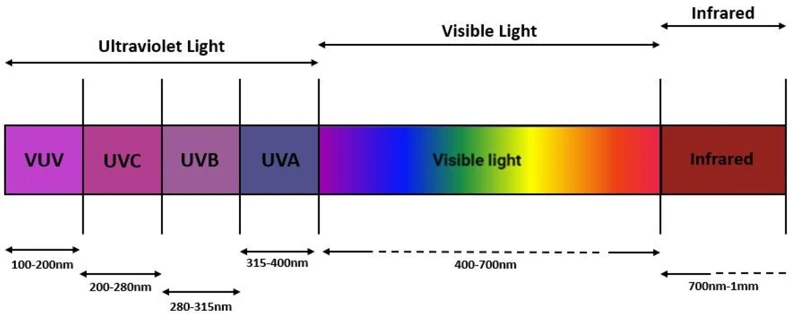
When it comes to cleaning, using UV light technology in smart vacuum cleaners is becoming increasingly popular. But how do UV-C and UV-A actually work in these devices? Understanding the science behind the technology can help you make an informed decision when choosing a smart vacuum cleaner to fit your cleaning needs. In this section, we will explore the specifics of UV-C and UV-A light and how they function within smart vacuums. We will also discuss the benefits of UV light in cleaning, and what factors to consider when purchasing a smart vacuum cleaner with UV technology. To learn more about the benefits of UV sterilization compared to traditional cleaning methods, check out UV Sterilization vs Traditional Cleaning.
UV-C in Smart Vacuum Cleaners
UV-C is a type of ultraviolet light that has a wavelength of 100-280 nanometers, making it the most effective type of UV light for killing germs and viruses. Smart vacuum cleaners that feature UV-C technology use it to sanitize and disinfect surfaces within a matter of seconds. This technology helps to eliminate harmful pathogens such as bacteria, dust mites, and other harmful particles by deactivating their DNA, rendering them unable to reproduce or cause infections. This makes UV-C technology an effective tool for reducing the spread of infectious diseases in your home.
How does UV-C technology work in smart vacuum cleaners?
Smart vacuum cleaners with UV-C technology feature a built-in UV light bulb that can be turned on and off as needed. When the UV-C light is turned on, it emits radiation that is proven effective at destroying bacteria, viruses, and other harmful pathogens in its path. The UV-C bulb in smart vacuum cleaners is located close to the vacuum’s suction area, which makes it easy for the light to target germs and bacteria inside the dustbin.
The benefits of using UV-C technology in smart vacuum cleaners:
– Efficient sterilization: UV-C technology has been proven to be effective at destroying up to 99.9% of germs and bacteria in just a few seconds, making it an ideal solution for quick and efficient sterilization of surfaces.
– Reduces the spread of infections: Smart vacuum cleaners with UV-C technology are ideal for high traffic areas such as living rooms and bedrooms, where germs and bacteria are more likely to spread.
– Safe for use: Smart vacuum cleaners with UV-C technology are safe to use both at home and in the workplace, and they do not emit any harmful chemicals or byproducts during use.
Factors to consider when choosing a smart vacuum cleaner with UV-C technology:
– Cleaning ability: The cleaning ability of the smart vacuum cleaner is an important factor to consider, as it determines how effectively the vacuum cleaner can remove dust and dirt.
– Type of UV light: Smart vacuum cleaners use either UV-C or UV-A technology. UV-C technology is the most effective at killing germs and bacteria, but it also has a higher price tag.
– Budget: Smart vacuum cleaners with UV-C technology can vary in price depending on the brand, the features they offer, and the level of quality they provide. Be sure to set a budget based on your needs and requirements.
The use of UV-C technology in smart vacuum cleaners is an effective and efficient way to sanitize and disinfect surfaces. It provides a safe and chemical-free solution for eliminating germs and bacteria, which makes it ideal for households with young children or pets. If you want to learn more about how smart vacuum cleaners with UV technology can help reduce allergies, check out our article on Smart Vacuum Cleaners with UV Sterilization for Allergies. Or, if you want to read about how UV technology can keep your home cleaner and healthier, check out our article on Clean Smart: Vacuum With UV Tech.
UV-A in Smart Vacuum Cleaners
UV-A is another type of ultraviolet light that is commonly used in smart vacuum cleaners. Unlike UV-C, which has a shorter wavelength and is primarily used for germicidal purposes, UV-A has a longer wavelength and is used more for surface sterilization and cleaning.
The benefits of UV-A in smart vacuum cleaners are numerous. One major advantage is its ability to kill bacteria and other pathogens on surfaces. This makes it especially effective for cleaning carpets and upholstery, where germs and bacteria can thrive and spread. UV-A is also effective at reducing allergens, such as dust mites, which can trigger allergies and respiratory problems.
To use UV-A in a smart vacuum cleaner, the device will typically include a special UV light that emits a wavelength of between 315 and 400 nanometers. This light will then be directed at the surfaces being cleaned, where it will help to break down bacteria and other microorganisms. Some smart vacuum cleaners may also include additional features, such as HEPA filters, which can help to further reduce allergens and pollutants in the air.
When choosing a smart vacuum cleaner with UV-A, it is important to consider a few key factors. One of the most important considerations is the cleaning ability of the device. Look for a vacuum cleaner that is specifically designed to target and eliminate allergens and germs, such as those that include UV-A lights.
Another important factor to consider is the type of UV light that is included in the device. Make sure the vacuum cleaner includes a UV-A light, as some may only include UV-C lights or no UV light at all. Finally, consider your budget when selecting a smart vacuum cleaner with UV-A, as prices can vary widely depending on the quality and features of the device.
UV-A is a powerful tool for cleaning and disinfecting surfaces in your home. Whether you suffer from allergies, respiratory problems, or simply want to maintain a cleaner and healthier living environment, a smart vacuum cleaner with UV-A can be a great investment in your health and well-being.
| Pros | Cons |
|---|---|
| Highly effective at killing bacteria and other pathogens | Not as effective for eliminating airborne pollutants |
| Helps to reduce allergens and dust mites | May be more expensive than other types of smart vacuum cleaners |
| Great for cleaning carpets and upholstery | May require additional maintenance |
Benefits of Using UV Light in Smart Vacuum Cleaners
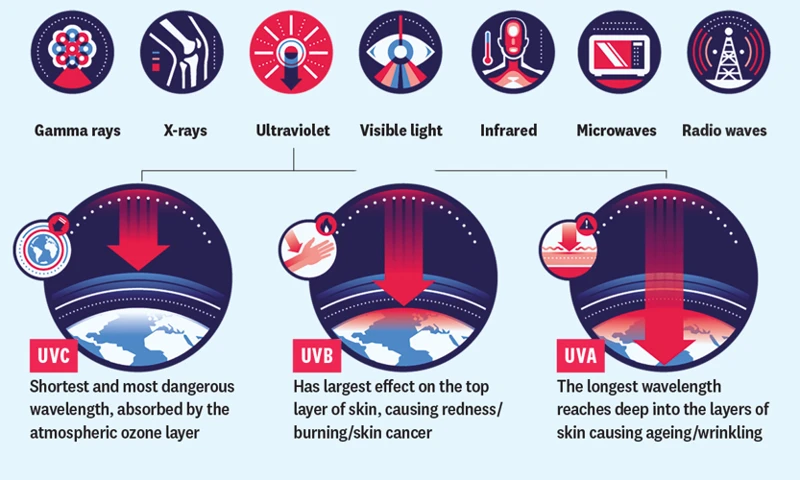
The advancement in technology has led to the production of smart appliances, including vacuum cleaners. One significant feature of such vacuum cleaners is their ability to use ultraviolet (UV) light in the cleaning process. The use of UV light in smart vacuum cleaners comes with a plethora of benefits, making it an essential aspect of modern cleaning technology. This segment examines the advantages of using UV light in smart vacuum cleaners, including its ability to eliminate harmful pathogens, reduce allergens, and kill dust mites. Let us explore these advantages in detail.
Eliminates Harmful Pathogens
Using UV-C or UV-A light in smart vacuum cleaners can help to eliminate harmful pathogens present in your home. These harmful pathogens can cause a range of health issues, ranging from allergies to respiratory problems. Here are some ways that the UV light technology in smart vacuum cleaners can help to eliminate harmful pathogens:
1. Kills Germs and Bacteria: UV-C light has strong germicidal properties and is effective in killing bacteria and viruses. When UV-C light is used in smart vacuum cleaners, it can eliminate up to 99.9% of germs and bacteria that are present in your home. This is particularly important if you have pets or if someone in your home has a weaker immune system.
2. Destroys Mold and Mildew: Mold and mildew not only look unsightly, but they can also negatively impact your health. Breathing in mold spores can cause symptoms such as coughing, wheezing, and respiratory problems. Using a smart vacuum cleaner with UV-C or UV-A light can destroy mold spores, making the environment healthier and safer.
3. Eliminates Dust Mites: Dust mites are tiny insects that live in dust and can cause allergies and asthma. Traditional vacuum cleaners only remove the dust, but they do not eliminate the dust mites. Using a smart vacuum cleaner with UV light can kill the dust mites and their eggs, reducing the allergens in your home.
4. Combats Common Allergens: Dust, pollen, and pet dander are common allergens that can cause irritation and respiratory problems. UV-C light can help to reduce these allergens by eliminating the molds and bacteria that produce them.
By using a smart vacuum cleaner with UV light technology, you can eliminate harmful pathogens from your home and ensure a healthier living environment. However, it is important to note that UV light technology should not replace traditional cleaning methods such as wiping surfaces and washing hands.
Reduces Allergens
Are you tired of dealing with allergies in your home? Smart vacuum cleaners with UV light technology can help reduce allergens and provide a healthier home environment. In this section, we will discuss how UV light can help reduce allergens and highlight some of the ways you can benefit from a smart vacuum cleaner with UV light technology.
What are allergens?
Allergens are substances that can trigger an allergic reaction in the body. Common allergens found in homes include dust mites, pet dander, mold, and pollen. These can lead to symptoms such as sneezing, coughing, and itchy eyes.
How does UV light reduce allergens?
UV light can help reduce allergens in several ways. When UV-C light is used in smart vacuum cleaners, it can destroy the DNA of bacteria, viruses, and other pathogens, which can help reduce the number of allergens in your home. Additionally, UV light can break down the proteins in dust mite feces, which are a common cause of allergies.
Benefits of reducing allergens with UV light
Reducing allergens in your home can provide several benefits, including:
| Benefits | Description |
| Improved air quality | Reducing allergens can help improve the air quality in your home and promote better respiratory health. |
| Less allergy symptoms | Less exposure to allergens can decrease the frequency and severity of allergy symptoms. |
| Less cleaning required | Reducing the amount of allergens in your home can lead to less cleaning required, and less time and money spent on cleaning supplies. |
Conclusion
If you or a family member suffers from allergies, a smart vacuum cleaner with UV light technology can help reduce allergens in your home and provide a healthier environment for everyone. When considering a smart vacuum cleaner, be sure to look for one with UV-C and UV-A technology, as well as a strong cleaning ability and a reasonable budget.
Kills Dust Mites
Dust mites are microscopic creatures that thrive in warm and humid environments. They live in bedding, carpets, and other household fabrics, and their presence can trigger allergies and respiratory problems. Fortunately, UV-C and UV-A light have been proven effective at killing dust mites.
Here are some ways in which UV light can help in killing dust mites:
- UV-C light breaks down the DNA of dust mites, ultimately killing them. By using a smart vacuum cleaner with this type of UV light in combination with suction, you can easily clean surfaces where dust mites are known to thrive, such as mattresses, carpets, and upholstery.
- UV-A light can also be effective at killing dust mites, but it works slightly differently. Instead of breaking down their DNA, it disrupts their reproductive cycle, making it more difficult for them to reproduce and spread. Smart vacuum cleaners that use UV-A light are often designed to work continuously in the background, helping to keep dust mite populations in check.
- Regular use of a smart vacuum cleaner with UV-C or UV-A light can also help prevent dust mites from settling in your home. By removing dust and debris regularly, you’ll make it less likely that they’ll find a suitable environment to thrive.
Using a smart vacuum cleaner with UV-C or UV-A light can be an effective way to eliminate dust mites and prevent them from causing allergies and respiratory problems. When choosing a smart vacuum cleaner for this purpose, make sure you consider factors such as cleaning ability, type of UV light, and budget.
Factors to Consider When Choosing a Smart Vacuum Cleaner with UV Light
Choosing a smart vacuum cleaner with UV light can be a daunting task, as there are several factors to consider. With so many options available in the market, it’s essential to know what to look for when making a decision. Your budget, cleaning ability, and type of UV light used are all important factors to consider. Let’s explore these factors in further detail to help you make an informed decision.
Cleaning Ability
When considering a smart vacuum cleaner with UV light technology, it’s important to evaluate its cleaning ability. This involves looking at its overall vacuuming performance and the effectiveness of its UV light in eliminating germs and other harmful pathogens. Here are some key factors to consider:
- Suction Power: A vacuum cleaner’s suction power is crucial for effective cleaning. Look for a smart vacuum cleaner that offers powerful suction and can easily suck in dirt, debris, and other particles from carpets and hard floors.
- Filtration System: The filtration system of a vacuum cleaner is also important for cleaning ability. A good filtration system can effectively trap allergens, dust, and other particles, preventing them from escaping back into the air. Look for a vacuum cleaner with a multi-stage filtration system that uses HEPA filters.
- UV Light Intensity: The intensity of the UV light used in a smart vacuum cleaner is also a key factor to consider. UV-C is more powerful than UV-A, making it more effective in killing germs and other pathogens. However, UV-A can also be effective in reducing allergens and killing dust mites.
- Coverage Area: The coverage area of the UV light is also important. Look for a smart vacuum cleaner that offers good coverage and can effectively clean a large area in one go.
- Run Time: The run time of the vacuum cleaner is important as well. Look for a model that offers a long battery life, so you won’t have to recharge it often and can easily clean your entire home without any interruption.
When evaluating a smart vacuum cleaner for cleaning ability, ensure that it has a powerful suction, a good filtration system, and an effective UV light technology. This will help ensure that it can effectively clean your home and eliminate harmful pathogens and allergens.
Type of UV Light
One important factor to consider when choosing a smart vacuum cleaner with UV light is the type of UV light that it uses. As mentioned earlier, there are two main types of UV light that are used in these devices: UV-C and UV-A.
UV-C is a short-wave ultraviolet radiation that has been proven to kill bacteria, viruses, and other harmful pathogens. It works by destroying the DNA and RNA of these microorganisms, rendering them unable to reproduce or cause infection. Smart vacuum cleaners that use UV-C light typically have a powerful lamp that emits this type of radiation, and it is often combined with other cleaning technologies such as suction and filtration.
UV-A, on the other hand, is a longer-wave ultraviolet radiation that is less effective at killing microorganisms. It is primarily used for its ability to fluoresce certain substances, which can help identify areas that need to be cleaned. Some smart vacuum cleaners use UV-A light to detect hidden dust and debris, which can then be targeted with other cleaning methods such as suction and brushes.
When choosing a smart vacuum cleaner with UV light, it is important to consider your specific cleaning needs and goals. If you are primarily concerned with eliminating harmful pathogens and allergens, then a model that uses UV-C light may be more effective. However, if you are looking for a device that can help identify hidden dirt and debris, then a model that uses UV-A light may be more suitable.
The type of UV light used in a smart vacuum cleaner can have a significant impact on its cleaning performance and effectiveness. By understanding the differences between UV-C and UV-A light, you can make an informed decision when choosing the best device for your home.
| UV-C | UV-A |
|---|---|
| Short-wave ultraviolet radiation | Long-wave ultraviolet radiation |
| Destroys DNA and RNA of bacteria, viruses, and other pathogens | Less effective at killing microorganisms |
| Emitted by powerful lamp | Primarily used for fluorescence |
| Combined with suction and filtration for maximum cleaning | Used to detect hidden dirt and debris |
Budget
When considering the purchase of a smart vacuum cleaner with UV technology, budget is an important factor to keep in mind. The price point of these devices can vary greatly depending on the brand, features, and type of UV light used. It’s important to determine your budget before searching for the perfect vacuum cleaner that fits your needs.
Table: Comparison of Smart Vacuum Cleaners with UV Technology by Price
| Brand | Type of UV Light | Price Range |
|---|---|---|
| Brand A | UV-C | $100 – $200 |
| Brand B | UV-C | $200 – $300 |
| Brand C | UV-A | $150 – $250 |
| Brand D | UV-C | $300 – $400 |
| Brand E | UV-A | $100 – $150 |
As you can see from the table, prices can range from as low as $100 to as high as $400. Keep in mind that generally, the more expensive the product, the more advanced features it is likely to have. A higher price point may mean more robust cleaning capabilities or longer-lasting UV bulbs.
Before making a purchase, consider your specific cleaning needs and how frequently you will be using the vacuum cleaner. If you have pets or have severe allergies, it may be worth investing in a higher-priced model that includes features like HEPA filters or stronger suction power.
Ultimately, it’s important to find a smart vacuum cleaner with UV technology that fits within your budget while also providing the necessary cleaning capabilities to maintain a healthy and clean home.
Conclusion
In conclusion, the use of UV light in smart vacuum cleaners has revolutionized the way we clean our homes. With the ability to eliminate harmful pathogens, reduce allergens, and kill dust mites, the benefits of using UV light in cleaning cannot be overstated.
When choosing a smart vacuum cleaner with UV light, there are several factors to consider. The cleaning ability of the vacuum is crucial, as it determines the overall effectiveness of the cleaning process. Additionally, the type of UV light used is important, with UV-C being more effective in killing pathogens than UV-A. Finally, budget is a factor to consider, as prices for smart vacuum cleaners with UV light technology can vary greatly.
It’s important to note that while UV light can be highly effective in cleaning, it should not be solely relied upon to eliminate all pathogens and allergens in the home. Regular cleaning and maintenance are still necessary to maintain a healthy and clean living environment.
Overall, the use of UV light in smart vacuum cleaners can provide an added layer of protection against harmful pathogens and allergens, making them a valuable investment for those looking to maintain a clean and healthy home.
Frequently Asked Questions
1. Can UV light damage my skin?
Yes, prolonged exposure to UV-C light can cause skin irritation and damage. UV-A light is less harmful, but it is still advisable to limit direct exposure to both types of UV light.
2. Is UV light effective in killing viruses?
Yes, UV-C light has been shown to be effective in killing viruses, including the COVID-19 virus. However, it is important to note that proper dosage and exposure time are critical factors in the effectiveness of UV-C light.
3. Can UV light eliminate pet dander?
Yes, UV light has been found to be effective in eliminating pet dander, as well as other common allergens like pollen and dust mites.
4. What other appliances can benefit from UV light technology?
UV light technology is commonly used in air purifiers, water purifiers, and even in refrigerators to prevent the growth of bacteria.
5. How long does it take for UV light to kill bacteria?
The time it takes for UV light to kill bacteria varies depending on the type of bacteria and the intensity of the UV light used. Generally, it takes anywhere from a few seconds to several minutes.
6. Is UV light safe for food contact surfaces?
Yes, UV light is safe to use on food contact surfaces. However, it is important to use the proper intensity and exposure time to ensure effective disinfection and to avoid any potential damage to the surface.
7. Can UV light eliminate odors?
Yes, UV light can help eliminate odors by killing the bacteria and viruses that cause them. However, it is important to note that UV light is not a complete substitute for proper cleaning and ventilation.
8. Can UV light be harmful to household plants?
Yes, prolonged exposure to UV light can be harmful to some plants. However, most smart vacuum cleaners that use UV light have a short exposure time, which is typically not enough to cause harm to plants.
9. Is it necessary to wear protective gear when using UV light technology?
It is not always necessary to wear protective gear when using UV light technology, but it is advisable to avoid prolonged exposure to UV-C light and to follow proper safety precautions as recommended by the manufacturer.
10. What is the lifespan of UV light bulbs?
The lifespan of UV light bulbs varies depending on several factors, including the quality of the bulb, usage frequency, and environmental factors. On average, UV light bulbs can last anywhere from 6,000 to 8,000 hours.

